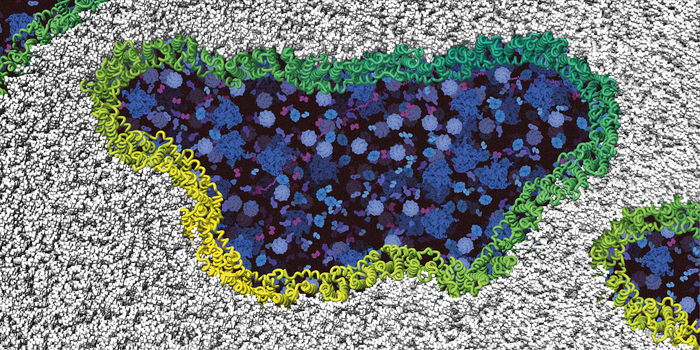Researchers from the University of Basel have discovered that cells do not simply burst at the end of their lives, as previously believed. Instead, a specific protein acts as a trigger for cell membrane rupture. The team has now unraveled the detailed mechanism of this process at the atomic level and published their findings in the journal Nature.
Cell death, also known as programmed cell death or apoptosis, is a vital process in all organisms. It plays a crucial role in eliminating damaged cells, as well as cells infected with viruses or bacteria. This self-destruction mechanism, often referred to as a “suicide” program, is intrinsic to cells and serves to prevent the formation of tumors and the spread of pathogens within the body. By undergoing programmed cell death, cells ensure the overall health and proper functioning of the organism.
Previously, it was believed that cells simply burst and die when reaching the end of their life. However, recent research conducted by scientists from the Biozentrum of the University of Basel, the University of Lausanne, and the Department of Biosystems Science and Engineering at ETH Zurich has shed new light on the final stage of cell death. In their study published in the journal “Nature,” the researchers have discovered that a protein called ninjurin-1 plays a critical role in this process. They found that ninjurin-1 assembles into filaments that act like a zipper, opening up the cell membrane and leading to the breakdown of the cell. These findings represent a significant milestone in our understanding of cell death and provide valuable insights into this important biological process.
Protein acts as a breaking point in the cell membrane
Traditionally, it was believed that cells swelled and eventually burst under increasing osmotic pressure during the final stage of cell death. However, the recent research led by Professor Sebastian Hiller from the Biozentrum at the University of Basel challenges this understanding. The study reveals that a protein called ninjurin-1 plays a crucial role in the rupture of the cell membrane, leading to cell disintegration. Rather than the cell bursting like a balloon, ninjurin-1 acts as a breaking point in the membrane, causing targeted rupture at specific sites. This discovery provides a new perspective on how cells undergo the process of cell death and highlights the role of ninjurin-1 in this mechanism.
Through the utilization of advanced technologies including highly sensitive microscopes and NMR spectroscopy, the researchers have successfully unraveled the precise mechanism by which ninjurin-1 triggers membrane rupture at the atomic level. Ninjurin-1 is a small protein that is integrated into the cell membrane. By employing these cutting-edge techniques, the scientists have gained insights into the structural and functional aspects of ninjurin-1 and its role in inducing the rupture of the cell membrane. This breakthrough provides a deeper understanding of the intricate processes involved in cell death.
When the signal for cell death is received, two ninjurin-1 proteins come together and cluster, acting as a wedge that penetrates the cell membrane. Additional proteins join in, creating large lesions and holes in the membrane. Through this process, the cell membrane is gradually cleaved open, leading to the complete disintegration of the cell. The remnants of the cell are subsequently eliminated by the body’s natural cleaning mechanisms. This detailed understanding of the step-by-step process sheds light on how cells undergo complete disintegration during programmed cell death.
According to Professor Sebastian Hiller, it is now clear that cell bursting does not occur without the involvement of ninjurin-1. While cells do swell to some extent due to ion influx, the actual rupture of the cell membrane depends on the action of this protein. This new understanding will lead to an expansion of the current knowledge on cell death in textbooks, incorporating these valuable structural insights. The discovery of the role of ninjurin-1 in the process of membrane rupture adds an important piece to our understanding of cell death mechanisms.
Therapy to prevent or promote cell death
The improved knowledge of cell death mechanisms, including the role of ninjurin-1 in membrane rupture, could have significant implications for the development of new drug targets. This understanding opens up possibilities for therapeutic interventions, particularly in conditions where programmed cell death is evaded, such as certain types of cancer. Additionally, for conditions characterized by premature cell death, like neurodegenerative diseases or life-threatening situations such as septic shock, drugs that can interfere with this process may hold potential as treatment options. The newfound insights into cell death provide a foundation for further research and the exploration of novel therapeutic approaches.
